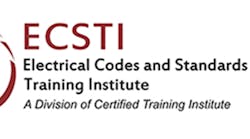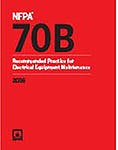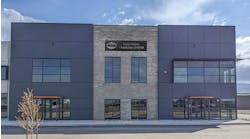How to Use NFPA 70B, Recommended Practice for Electrical Equipment Maintenance
NFPA 70B is a recommended practice that is used for preventive maintenance of electrical equipment. It was first published in 1968 for such purpose. It was decided at that time it was not published to duplicate or supersede instructions that are provided by manufactures of such equipment.
NFPA 70B can be utilized on systems and equipment that are installed in industrial plants, institutional, and commercial buildings as well as large multifamily residential complexes. NFPA 70B has 35 chapters covering maintenance intervals and procedures for electrical equipment and systems. Included are 16 Annexes with helpful explanatory and recommended material. It is the opinion of the authors that OSHA drives this standard as well as the National Electrical Code (NEC) and NFPA 70E that deals with electrical safety.
OSHA’s ANNEX A
In Annex A of OSHA, references are made to the use of the NEC and NFPA 70E. NFPA 70E - 200.1, IN sends the user to NFPA 70B for maintenance performed on electrical equipment and related systems. The authors believe that OSHA does push these codes and standards to be utilized for safety.
For example, NFPA 70E - Annex L contains recommended procedures for intervals checks to particular types of electrical equipment. NFPA 70B - Annex K can be used for inspections, maintenance, and testing that includes a greater detail of long-term guidelines for specific types of electrical systems and equipment.
Companions in safety
NFPA 70B – Chapter 7 refers to the use of NFPA 70E for determining the arc-flash energy of the electrical system and equipment where a qualified maintenance person is exposed to electrical energized (live) conductors and components. In other words, NFPA 70B - Chapter 7 refers the user to NFPA 70E for requirements pertaining to safety of maintenance personnel.
Discussion about arc-flash hazards
It is well understood by engineers that the expected exposure to incident energy from an arc-flash is based on the calculation performed with the assumption that the electrical power system and equipment have been maintained properly. Engineers try to reduce the incident energy measured in cal/cm2 by installing protective devices that are capable of interrupting the current flowing to the electrical arc that is sensitive to such current. Where the power system protective devices are not maintained as recommended by NFPA 70B the current can supply the arc longer producing more hazardous energy.
For example, protective devices maintained per Table130.7(C)(15)(A)(a) can be switched and PPE is not required. For more information on normal operation, see NFPA 70E - 130.2(A)(4).
Discussion of insulated-case/molded-case circuit breakers (NFPA 70B - Chapter 17)
A molded-case/circuit breaker consists of the following two basic parts.
- The first part consists of the current carrying conductors, contacts, and appropriate operating mechanism necessary to perform the circuit-switching functions.
- The second part consists of the protective element including the tripping mechanism.
Application (NFPA 70B - 17.2)
To prevent the tripping of the overcurrent protective device, the connected load is increased by 125% that derates the overcurrent protective device to 80%.
For example, a connected load of 16A is equal to 20A (16A x 125%). Derating the overcurrent protective device by 80% (20A x 80% is 16A) and the 16A load does not exceed 80% of the overcurrent protective device. All connected loads that can operate for three hours or more must be multiplied by 125%. See the NEC definition of continuous operation in NEC Art. 100.
Characteristics of circuit breakers (NFPA 70B - 17.3)
Circuit breakers can be selected to clear short circuits, ground faults, overloads, GFCI, and AFCI problems as well. Under moderate overloads such motors starting, circuit breakers will allow loads to start and run. Under serve overloads, the circuit breaker trips open quickly, providing adequate protection for conductor insulation, motor windings, as well as other electrical components. But for high-fault currents, the magnetic tripping portion of the device responds to open the circuit immediately.
Inspection and cleaning (NFPA 70B - 17.9)
Excessive heating conditions in circuit breakers can over heat the elements and cause nuisance tripping and possibly failure of the device. Loose connections are the most common cause of overheated connections at terminals, lugs, etc. Maintenance personnel should check for connections of gray, charred, or black discolored signs. Where these signs are detected, such work can be very dangerous and disconnected before working on.
Circuit breaker mechanically exercised
To ensure proper operation and a fast trip opening, circuit breakers mechanical mechanism should be exercise as recommended by NFPA 70B - Annexes K and L.
Manual operation of the circuit breaker will help keep the contacts clean and aid the lubrication in its proper performance. The longer it takes for a circuit breaker to open, the longer the current can supply the arc and produce hazardous energy. The maintenance of circuit breakers per NFPA 70B is an important element of a proper maintenance program. Warning, never change out a circuit breaker, without first reviewing NEC Sec. 240.85.
Conclusion
In conclusion, it is the opinion of the authors that OSHA does drive the NEC, NFPA 70E, and NFPA 70B when it comes to maintaining electrical systems and equipment for safety. To perform maintenance and safety on equipment, maintenance personnel should be well trained and have a basic knowledge on these codes and standards.





